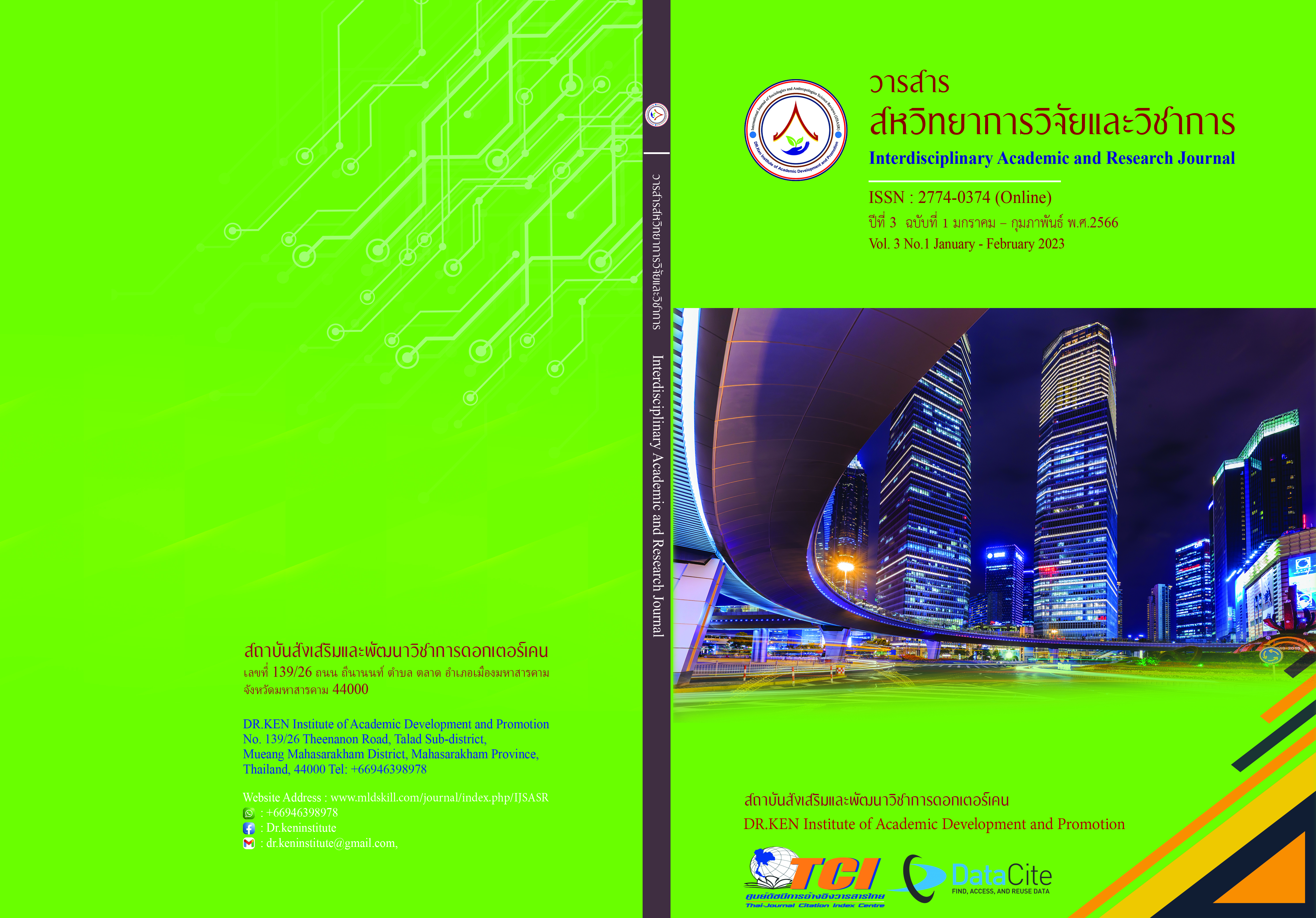Guidelines for Developing Student Affairs in the Situation of the COVID-19 Epidemic Educational Institutes under Vocational Education Chachoengsao Province
DOI:
https://doi.org/10.14456/iarj.2023.50Keywords:
COVID-19 Epidemic Situation; , Student Affairs; , Administrative ProblemsAbstract
The student Affairs Development Division plays an important role in managing various services, where each school will have administrators to supervise and follow up with teachers and educational staff responsible for each aspect of student affairs for implementation. systematically and efficiently. As a result, the learners receive thorough care. This research aims to (1) study the problems of the administration of the student affairs development department in the situation of the epidemic of COVID-19 at vocational education institutes in Chachoengsao Province. And (2) comparing the level of administrative problems of the student affairs development department in the situation of the COVID-19 epidemic classified by status, work experience, and age. The population used in this research was 569 vocational education institutes in Chachoengsao Province, of which 229 were used as a sample. The research tool was a questionnaire on the administration of the student affairs development department in the situation of the COVID-19 epidemic. The statistics used in the research were frequency, mean, percentage, standard deviation, F-test, and t-test. The results of the research showed that (1) the level of problems in the administration of the student affairs development department in the situation of the epidemic of COVID-19, the overall vocational education institutes in Chachoengsao Province were at a high level. And (2) the result of a comparative analysis of the problem level of student affairs development department administration in the situation of the COVID-19 epidemic, vocational education institutes in Chachoengsao Province, both overall and in each aspect, found that; (a) classified by overall status, there is no difference, but in each aspect, there are differences in teacher counselor work and career guidance and recruitment work, (b) classified by work experience in general, not different, but in different aspects in administrative work, and (c) classified by age, overall and each aspect were not different at the statistical significance level of 0.05.
References
ชัยเดช อารีศิริไพศาล. (2562). การบริหารกิจการนักเรียนที่มีคุณภาพ. รายงานการประชุม Graduate School Conference. 3(1),248-256.
ณปภัช พวงลำไย, สุรเจต ไชยพันธ์พงษ์, พีระ พันธุ์งาม, กานดา สุขทุม. (2561). การศึกษาสภาพการปฏิบัติหน้าที่ของครูที่ปรึกษา ฝ่ายพัฒนากิจการนักเรียน นักศึกษา วิทยาลัยเกษตรและเทคโนโลยีกำแพงเพชร. วารสารสิรินธรปริทรรศน์, 20(2), 166-175.
บุญชม ศรีสะอาด. (2553). การวิจัยเบื้องต้น. พิมพ์ครั้งที่ 8. กรุงเทพฯ : สุวีริยาสาส์น.
พิมพ์ พิมพ์ชนกธาดา. (2563). การบริหารงานฝ่ายพัฒนากิจการนักเรียน นักศึกษา ของสถานศึกษาภาครัฐ สังกัดอาชีวศึกษาจังหวัดอุดรธานี สำนักงานคณะกรรมการการอาชีวศึกษา. วารสารบริหารการศึกษาบัวบัณฑิต. 20(4),1-12.
สัญญา แก้วใส. (2564). ความต้องการจำเป็นในการพัฒนาการดำเนินงานฝ่ายพัฒนากิจการนักเรียนนักศึกษา ในสถานศึกษาสังกัดอาชีวศึกษาจังหวัดขอนแก่น. สิกขา วารสารศึกษาศาสตร์, 8(2),146-157.
สำนักงานคณะกรรมการการอาชีวศึกษา. (2562). คู่มือการปฏิบัติงานสถานศึกษาสังกัดสำนักงานคณะกรรมการการอาชีวศึกษา. กรุงเทพฯ : สำนักงานคณะกรรมการการอาชีวศึกษา.
สำนักงานศึกษาธิการจังหวัดฉะเชิงเทรา. (2562). ข้อมูลบุคลากรสำนักงานศึกษาธิการจังหวัดฉะเชิงเทรา. ฉะเชิงเทรา: สำนักงานศึกษาธิการจังหวัดฉะเชิงเทรา
Krejcie, R. V. & Morgan, D. W. (1970). Determining Sample Size for Research Activities. Educational and Psychological Measurement, 30(3), 607-610.
Downloads
Published
How to Cite
Issue
Section
License
Copyright (c) 2023 สำราญจิตร์ ภูมี

This work is licensed under a Creative Commons Attribution-NonCommercial-NoDerivatives 4.0 International License.
Copyright on any article in the Interdisciplinary Academic and Research Journal is retained by the author(s) under the under the Creative Commons Attribution-NonCommercial-NoDerivatives 4.0 International License. Permission to use text, content, images, etc. of publication. Any user to read, download, copy, distribute, print, search, or link to the full texts of articles, crawl them for indexing, pass them as data to software, or use them for any other lawful purpose. But do not use it for commercial use or with the intent to benefit any business.
















.png)


